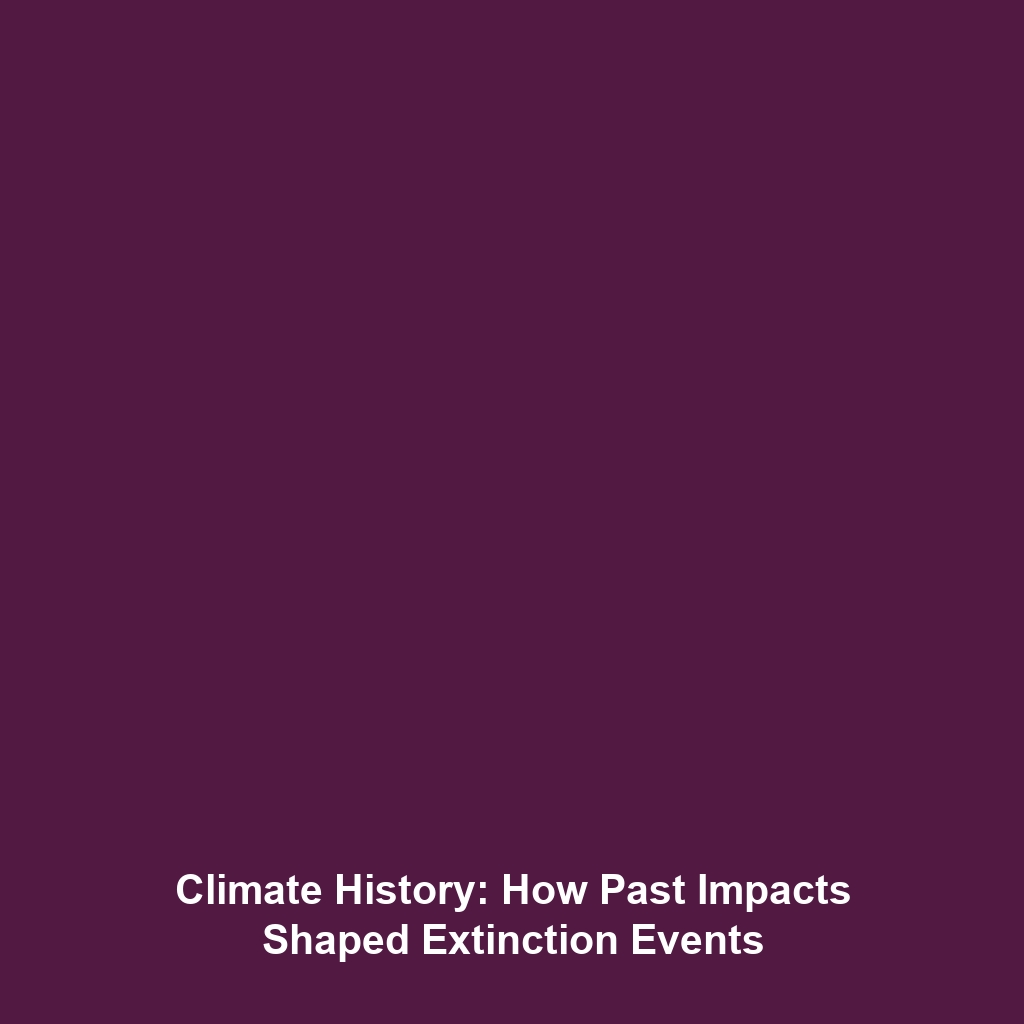Evidence of Past Impacts and Their Relationship to Climate and Mass Extinction Events
Introduction
The study of evidence of past impacts and their profound relationship with climate and mass extinction events is crucial within the vast domain of Climate History. Understanding these relationships is vital for discerning how previous environmental shifts influenced the trajectory of life’s evolution on Earth. Insights gained from this research not only shed light on past biodiversity loss but also provide invaluable knowledge to help us navigate contemporary environmental challenges. This article delves into these significant connections, exploring their implications for the future.
Key Concepts
Several major concepts underpin the study of evidence of past impacts and their association with climate and mass extinction events:
1. Impact Events
Impact events, such as asteroid or comet collisions, have historically led to drastic changes in climate and subsequently triggered mass extinctions. The Chicxulub impact is a prime example, linked to the extinction of the dinosaurs approximately 66 million years ago.
2. Climate Change Patterns
Fluctuations in climate, stemming from both natural and anthropogenic sources, have been pivotal in shaping terrestrial and marine ecosystems. Evidence from cores, sediments, and ice records reveal correlations between climate shifts and periods of biodiversity decline.
3. Extinction Mechanisms
Understanding the mechanisms by which climatic shifts lead to extinctions—whether through habitat loss, resource scarcity, or increasing temperature stress—is essential for comprehending how such events might recur in the future.
Applications and Real-World Uses
The study of evidence of past impacts has several significant applications in the field of Climate History:
- Risk Assessment: By understanding past extinction events, scientists can develop models to assess risks to current biodiversity from climate change.
- Conservation Biology: Insights gained from historical data inform conservation strategies, aiding in prioritizing efforts to protect vulnerable species.
- Policy Making: Evidence from past impacts can guide policymakers in creating frameworks that mitigate future extinction risks.
Current Challenges
Despite notable advances, studying evidence of past impacts presents several challenges:
- Inconsistent data availability across different geographic regions.
- Difficulty in correlating precise timelines of impacts with climate patterns.
- Challenges in modeling complex ecosystems to predict future extinctions accurately.
Future Research and Innovations
Emerging technologies and innovative research methodologies are set to shape future studies of past impacts:
- Advanced Geospatial Techniques: These technologies can provide better mapping of impact sites and affected regions.
- Genetic Analysis: New genomic methods may reveal links between ancient species’ resilience and past climate events.
- Data Integration: Combining data from various scientific fields (paleontology, climatology, geology) enhances understanding of climate-related extinction patterns.
Conclusion
In conclusion, the evidence of past impacts and their relationship to climate and mass extinction events reveals critical lessons for understanding our planet’s history and preparing for its future. By continuing to unravel these complex interconnections, we can enhance conservation strategies and foster a more sustainable world. For further reading on Climate History and its implications, explore related topics such as conservation biology and climate policy development.

Leave a Reply